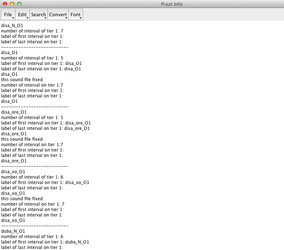

Their proficiency scores were operationalized as two factor scores of cognitive fluency (linguistic resources and processing speed) in Study 3. The participants’ L1 fluency was also assessed, using another L1 argumentative speech task. The speech data were analysed in terms of three subconstructs of utterance fluency (speed, breakdown, and repair fluency). In order to measure utterance fluency, speech data were elicited via four speaking tasks which differed in the quality of speech processing demands: argumentative task, picture narrative task, and text retelling tasks with/without read-aloud assistance. Using a range of psycholinguistic tests, cognitive fluency was assessed in terms of linguistic resources and processing speed at different linguistic levels: vocabulary (vocabulary size, lexical retrieval speed), grammar (sentence construction speed and accuracy, grammaticality judgement speed and accuracy), and pronunciation (articulatory speed). Studies 2–4 were conducted using the same dataset which included a set of cognitive and utterance fluency measures from Japanese-speaking learners of English (N = 128).
PRAAT SCRIPT COMPUTE F0 STATISTISC MANUAL
L2 listeners), Perceived fluency rating procedure (Definition of fluency, the number of point scales), and Utterance fluency measure calculation (length of pauses, manual vs. Methodological moderator variables were selected with respect to the major phases of research into the utterance-perceived fluency link: Speech stimulus preparation (e.g., task type, target L2), Rater background (e.g., L1 vs. Among the pooled utterance fluency measures, Study 1 selected the common measures from four different categories: speed (articulation rate), breakdown (silent pause frequency, silent pause duration), repair (disfluency rate), and composite fluency (mean length of run, speech rate). Study 1 collected 263 effect sizes from 22 studies reporting the correlation coefficients between listener-based judgements of fluency and objective measures of temporal features (N = 335–746). Finally, Study 4 investigated the extent to which L2 utterance fluency can be predicted from L1 utterance fluency with regard to the moderator effects of L2 proficiency on the L1-L2 utterance fluency link. The study also analysed the stability of the factor structure of utterance fluency (Tavakoli & Skehan, 2005)-speed, breakdown, and repair fluency-and cognitive fluency across speaking tasks. Study 3 examined the contribution of cognitive fluency to utterance fluency, taking a structural equation modelling (SEM) approach. Study 2 compared utterance fluency performance across speaking tasks which were designed to differ in the quality of speech processing demands, operationalized by task design features (i.e., task effects). Study 1 took a meta-analytic approach to synthesizing previous findings on the relationship between perceived and utterance fluency. To this end, this thesis consists of four separate studies. The overarching goal of the thesis is to examine the construct of L2 oral fluency, particularly focusing on the interrelationship between cognitive, utterance, and perceived fluency. However, it is still unclear how these three subconstructs of L2 fluency are interrelated with each other. In order to distinguish different conceptualizations of fluency, Segalowitz (2010) proposed three subconstructs of fluency: utterance fluency (i.e., observable temporal features of speech), cognitive fluency (i.e., speaker’s ability to manipulate L2 knowledge efficiently), and perceived fluency (i.e., listener’s subjective judgements of fluency).

However, L2 fluency research has witnessed a long debate over the definition and measurements of L2 oral fluency scholars have interchangeably used the term, “fluency”, with different connotations, such as speakers’ ability, speech features, and listeners’ perception. In the context of the learning, teaching, and assessment of second language (L2) speaking skills, L2 fluency has been regarded as one of the important constructs.


 0 kommentar(er)
0 kommentar(er)
